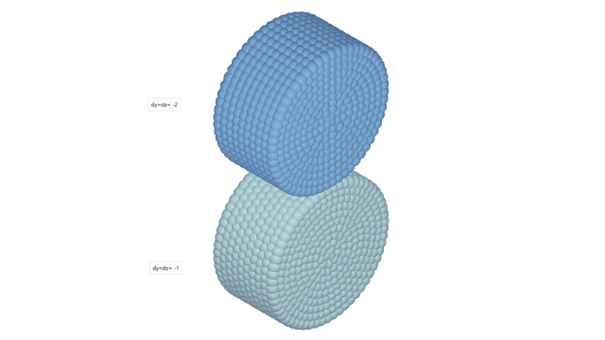SPH
γSPH
entype, enid, $\mu$
pid${}_{\mathrm{1}}$, gid${}_{\mathrm{1}}$, $dx_1$, $dy_1$, $dz_1$, $\alpha_1$, $\beta_1$, $v^{max}_1$
.
pid${}_n$, gid${}_n$, $dx_n$, $dy_n$, $dz_n$, $\alpha_n$, $\beta_n$, $v^{max}_n$
Parameter definition
Description
Defines SPH geometries/grids and interaction between SPH nodes and structure. Even if no interaction with FE parts is defined, the first line must be left blank. By default, geometries are filled with SPH nodes based on a cartesian grid. When more than one SPH part is defined, the node generation process considers an automatic Boolean operation to prevent any node overlapping. Geometries are filled successively following the definition order.
Meshing options:
$dz = z_{max}-z_{min} \; \rightarrow \;$ 2D model is generated.
$dy = dz = -2 \; \rightarrow \;$ The axisymmetric filling routine is activated, considering a random distribution of the initial rotation angle.
$dy = dz = -1 \; \rightarrow \;$ The axisymmetric filling routine is activated, without a random distribution of the initial rotation angle (default option when BC_SYMMETRY is used).
Note that for the axisymmetric filling, the revolution axis is $x$ and the reference mesh must be in the $XY$ plane.
Example

